Carnival in Eastern Slavonia: February Masquerade Traditions (Part II) - The Food
February 23rd, 2022 - With every traditional festivity comes a reflection of our ancestors' lives, which ties closely to what they ate. This is part two of Carnival in Eastern Slavonia, but this time - the food edition. A look into what Slavonians eat during this traditional event.
Even though it was mentioned in the previous article that the roots of Carnival and Masquerade don’t have anything to do with Christianity and other religions, here in Eastern Slavonia, people decided to connect these traditions with Lent and Easter, which is usually a month and a half later in the Catholic calendar. Food is a significant identifier for every region in Croatia. For instance, Slavonia is popular for its heavy food: pork meat-based food like kulen, its “sister” seka, cracklings (čvarci), sausages, and stews made from beans, cabbage, and many more. Other homemade products are jams made from plums, quinces, apricots, and whatever fruits are available during the summer season. Furthermore, those jams are stored in cold pantries and can last for more than a year if it’s preserved and packed correctly. All mentioned dishes and products are consumed during winter until another set of preparations - always scheduled simultaneously and dated.
In February, these “heavy” dishes, especially dried meat ones like cracklings, are usually used for baked delicacies like čvarnjače, which are made so the leftover cracklings are not thrown away. They are made of salty leavened dough made out of fine flour with grounded cracklings (made out of melted lard) and can be eaten with sour cream or yogurt.
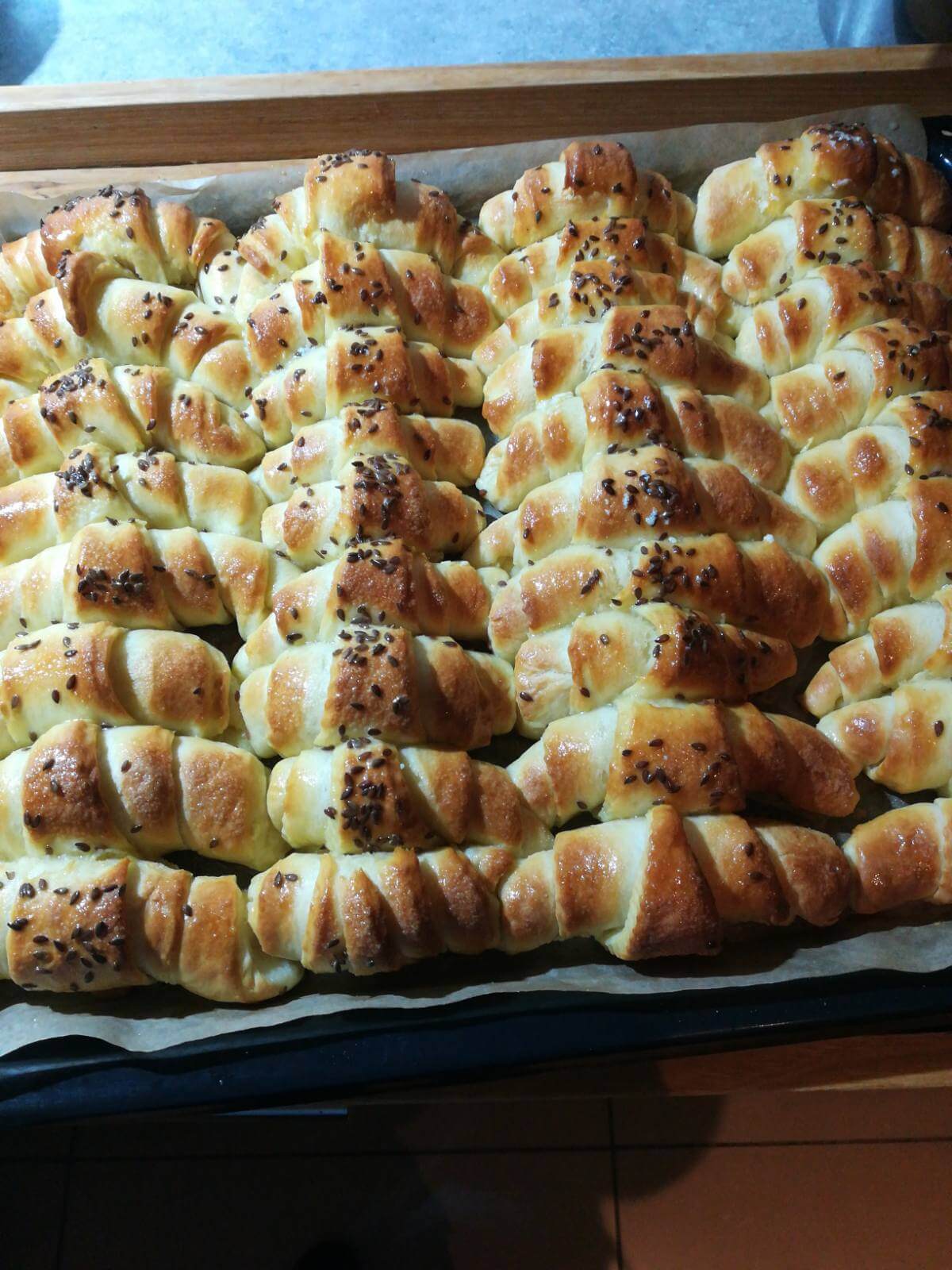
My aunts rolls - "kiflice," Private album
Rolls (kiflice) are also made from salty, leavened dough. Before putting them into the oven, they’re coated with eggs or milk for the colour and sprinkled with sesame or cumin. Since rolls are usually served empty as a snack, Slavonians eat them with a plate of dry meat like kulen, ham, and sausages. It can also be eaten with dairies. My personal favourite is when they are filled with ham and cheese.
Now we get to the good stuff. Sweet delicacies.
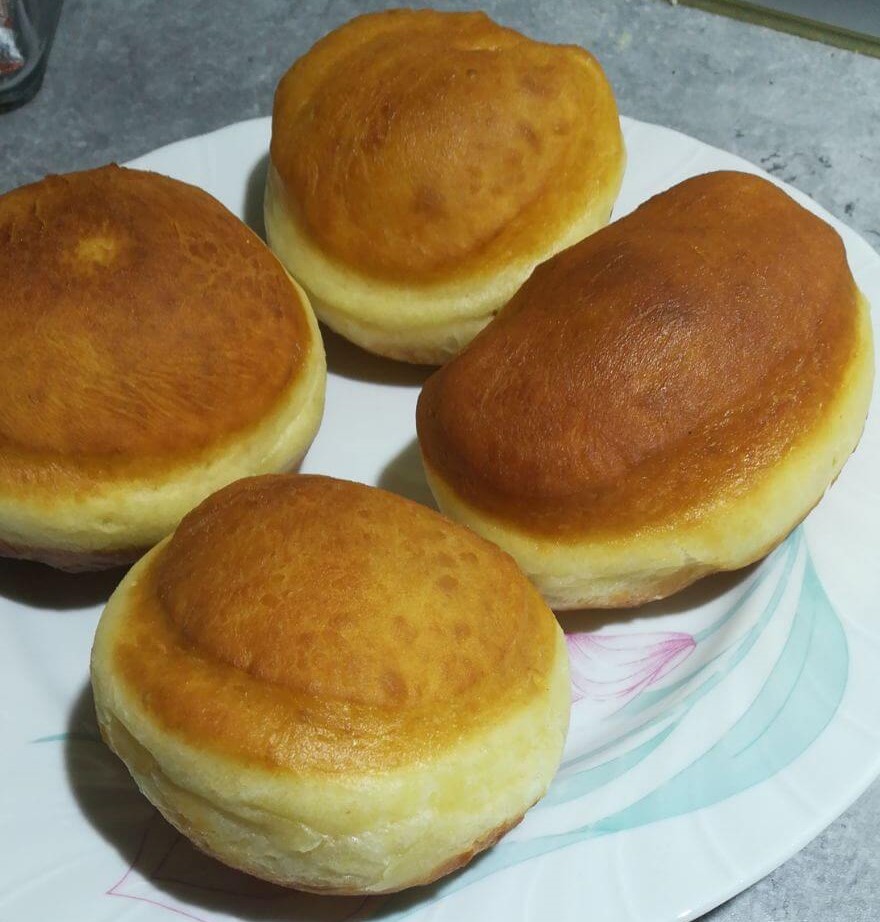
My aunts "krofne" , Private album
During carnival and masquerade in February, the most popular sweet food is donuts (krofne). It is a German sweet dessert made of leavened pastry, baked primarily in hot fat in these parts of the country or oil. In Slavonia, these donuts are called “krofne,” which is a distorted name from the German word “krapfen,” whereas in northern parts like Zagreb and the region of Zagorje, they’re called “krafne”. Interestingly, they’re not usually baked very often, only on special occasions, like “svinjokolja” (pig slaughter), New Year’s, and of course, Carnival. Furthermore, our ancestors believed that “krofne,” while being cooked and rising in volume, symbolizes grace in every aspect of life. Nevertheless, “krofne” are still very prominent in the lives of Slavonians, and they’re usually eaten with powdered sugar and homemade jams. Newer versions of “krofne” come with Nutella and other chocolate spreads, which are very popular with children.
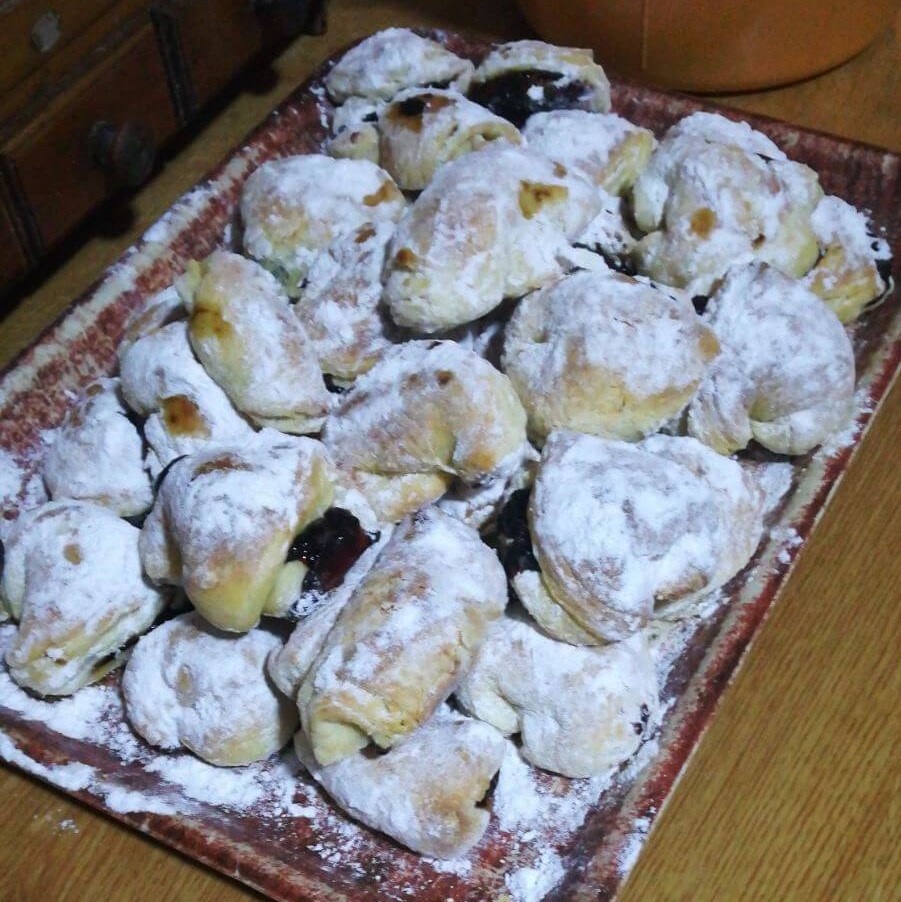
My aunts "salednjaci" - puff pastry dessert with homemade jam, traditional Slavonian delicacy, Private album
This sweet delicacy is a typical traditional Slavonian dessert prepared during “svinjokolja” and the Carnival - “salednjaci.” The name varies in other regions in Croatia; for example, in Zagreb and Zagorje, it is called “salenjaci.” Butter is a usual ingredient for puff pastry, but mothers and grandmothers would use pig lard because there would be a lot of it left after pig slaughter. Also, butter was costly back in the day, so people had to find ways to make those desserts. This delicacy is known as “Croatian croissants with character” and “a cake with thousand leaves” since the puff pastry is folded four times during the process. They’re usually filled with homemade blue plum or an apricot jam. Unfortunately, people have reservations about this dessert because of a misconception that pig fat or lard are not healthy.
On the contrary, it’s healthier than most of the ingredients we consume today. The dessert got lost in the last two decades or so, but it’s slowly coming back through the effort of institutions that preserve tradition and women who started bringing out this dessert on special occasions. Of course, that includes traditional events and festivities in Slavonia during wintertime.
Furthermore, sweet cakes and pastries like “mađarica,” “bijela pita,” “medena pita,” and more are also included on this list. Still, it would take a few more articles to name all traditional Slavonian food.
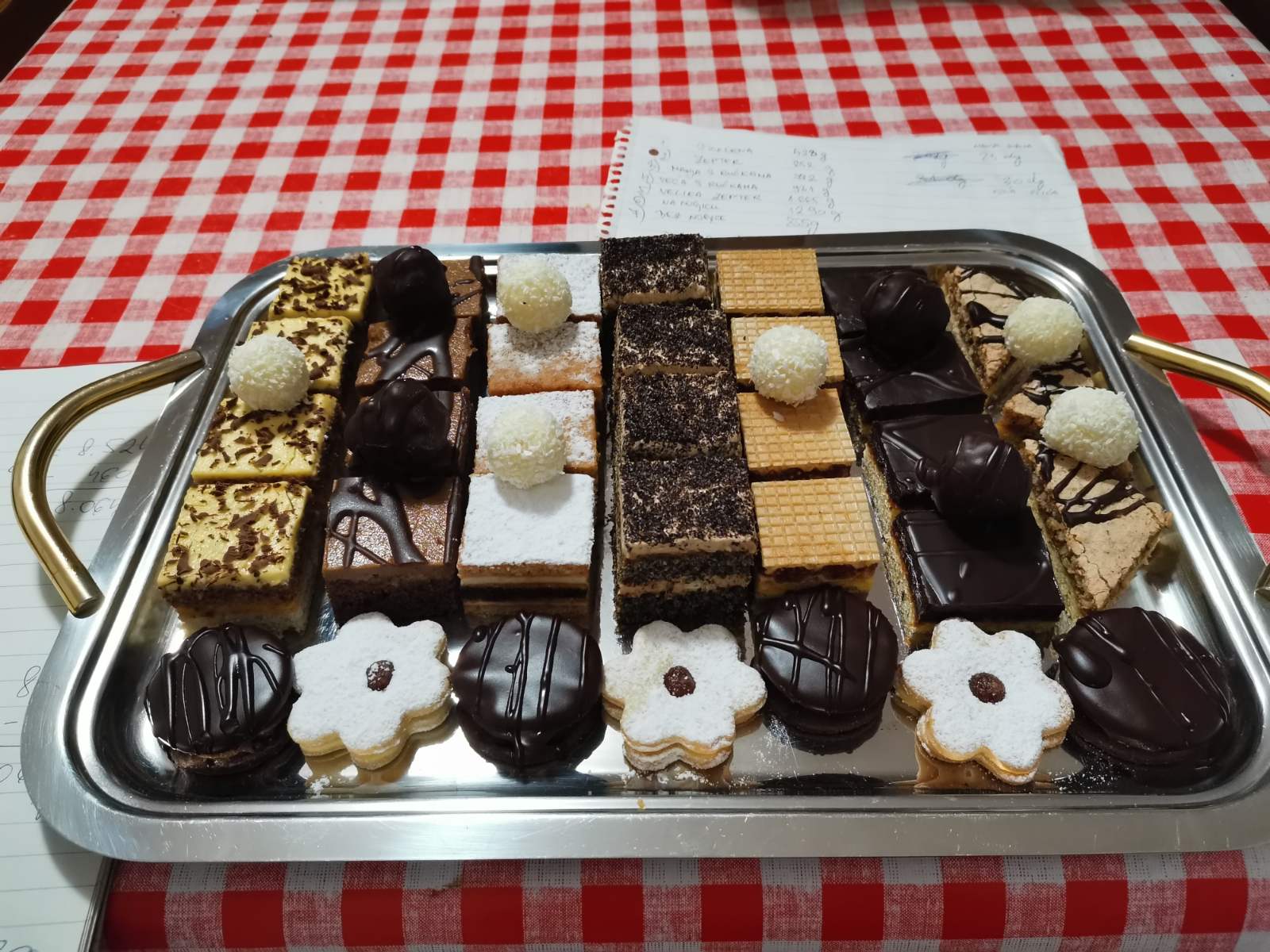
My mother's sweet cakes and pastries, usually made during winter times, Private album
In the end, this article can also be used as an invitation for you to come to Slavonia and participate in the Carnival and other festivities to try these rich delicacies that fed generations and generations of people and still do. There are seven days left until Lent, so hurry up and experience the rich Slavonian life because if there’s one thing Slavonians know how to do, it is eating rich and enjoying life.
For more, check out our lifestyle section.
Carnival in Eastern Slavonia: An Intro to February Masquerade Traditions (Part I)
February 16th, 2022 - In Croatia, after Christmas and New Year's, February is usually reserved for the Carnival, which is tightly connected with the Masquerade tradition that leads to the Carnival as an intro to Lent and later, to Easter. Each region has its own tradition that has been maintained for centuries. A look into Carnival in Eastern Slavonia.
The Carnival (Poklade) is a calendar custom between the Epiphany (January 6) and Lent (Korizma). It is marked by masked processions and parties, merriment, madness and debauchery, and an abundance of food and drink. The highlight of the event is the last Sunday, Monday, and Tuesday (Shrove Tuesday) before Ash Wednesday. Its roots don’t have anything related to Christianity - primarily of magical, apotropaic significance. Any disguise, clothes worn on the wrong side, deafening noise, pouring ashes, and more, should drive away the winter, demons, and evil forces that repel their actions from people, livestock, homes, and crops. Carnival events in the Croatian folklore tradition can be divided into two main types. One type is referred to as lupercal; they are seemingly more archaic, common in the rural and livestock areas. Participants are groups of men dressed in animal skins, with bells hung on their bodies or worn on their hands. The second type of carnival event in Croatia is saturnal; they occur in cities, particularly common on the Adriatic coast and island areas. These usually contain less magical features and are more focused on entertainment and social criticism. As mentioned before, even though the event overlaps with Christian holidays, the Catholic Church has been trying to suppress these traditions for centuries because of the opposing nature to every existing authority throughout history.
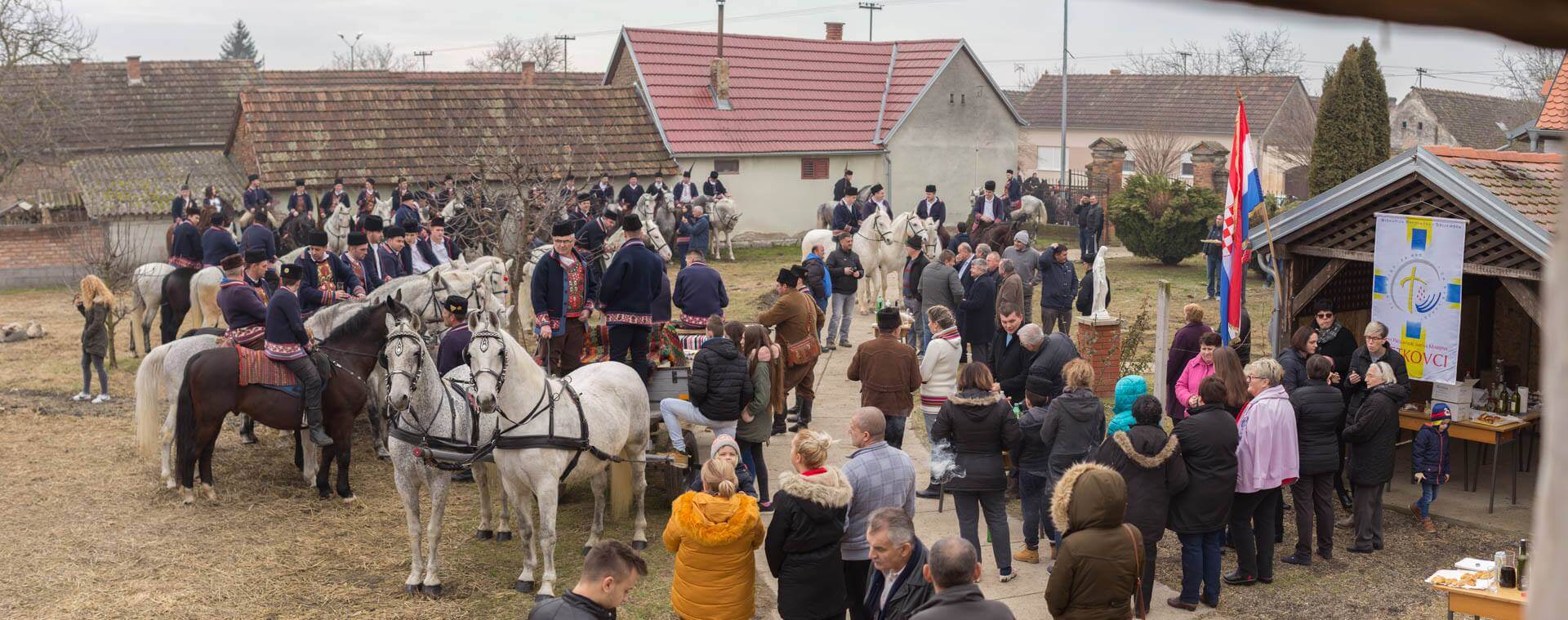
Photo credit: Marko Miličević - načelnik Općine Ivankovo
The Eastern Slavonian Carnival is used for the hedonistic type of “partying” before Lent - a time for mourning, renunciation, and penance. Every village has its own day for organizing the Carnival, it all depends on when Lent starts. Carnival time starts with Masquerade (Maškare), more precisely, the procession of rural masquerades with participants disguising themselves in various characters. Men are mostly dressed as women and women are dressed as men. Masked groups visit every house in the village and sing in front of them for gifts like sweets, food, and drinks. After that, “masqueraders” thank the hosts and continue their journey through the village looking for more gifts. However, in the 2000s, these masked groups became groups of children who would go on tour all over the village after school, singing and seeking gifts from villagers. If a host doesn’t react to the singing of masked children and doesn’t come out of the house, houses get “attacked” by rotten eggs. This tradition probably came into relevancy in the last 20 years or so because it is impossible to find a legit source about it and it is not a really pleasant experience, especially if you need to clean rotten eggs off the walls of your house.
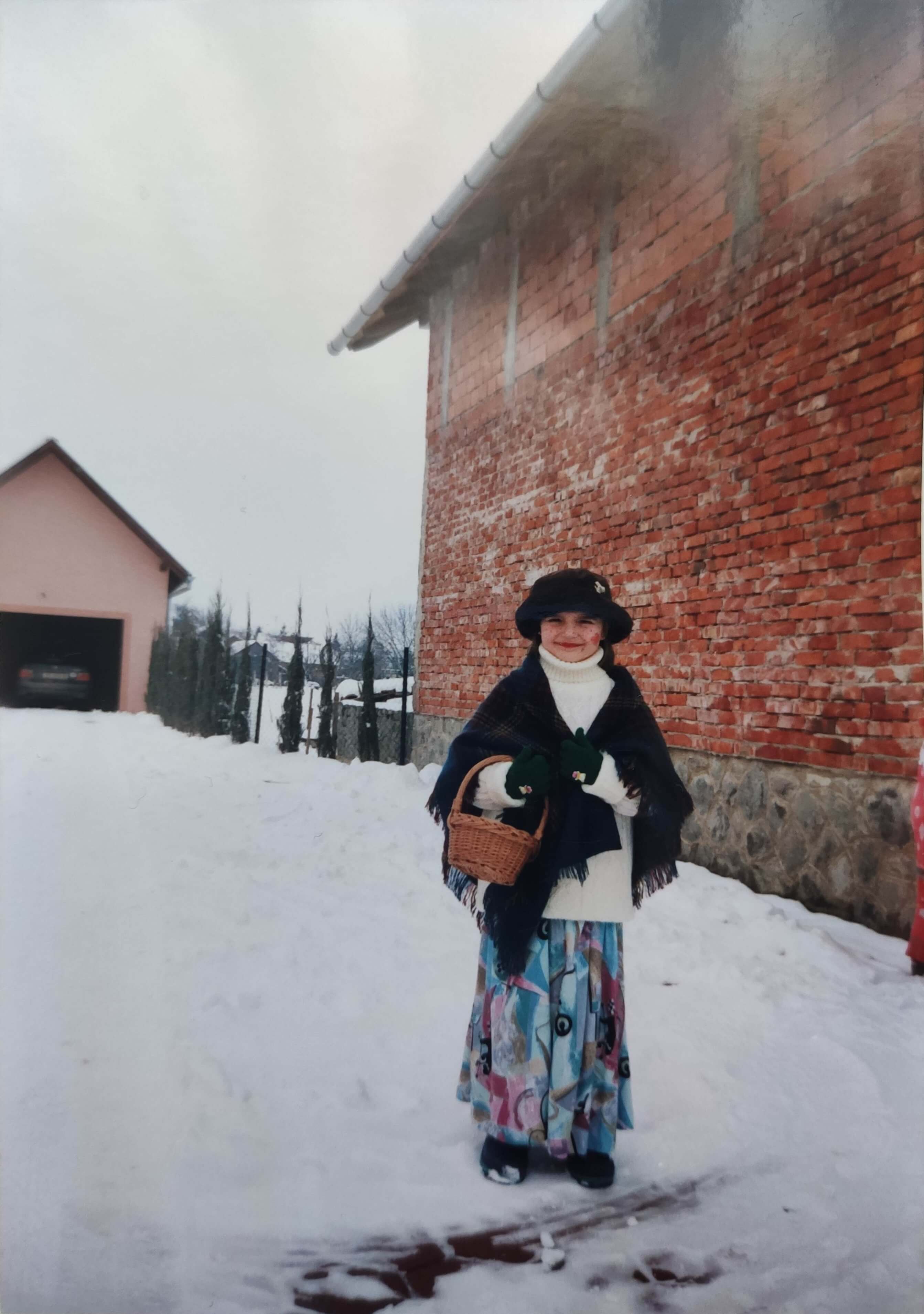
My sister ready for masquerade with her friends, at the beginning of 2000s - Private album
A huge part of the Carnival in Slavonia is the so-called Carnival riding (Pokladno jahanje) which is a tradition that goes back all the way back to the 18th century. Carnival riding came to prominence during Military Frontier (Vojna Krajina) and some Slavonian villages maintained it until after Second World War. The custom was revived after the Homeland War and again became one of the most important events in Slavonia. Riding through the village, the riders would stop at houses of certain families who treated them with Slavonian food and drinks and they usually repay them with a song. After leaving the host's house, the horsemen would sing “Domaćine, od srca ti hvala, što nam tvoja desna ruka dala” (Thank you, hosts, thank you from the bottom of our hearts, what your right hand has given us”). This type of celebration is still going strong and has more and more riders every year, in an effort to preserve the tradition and identity of Slavonia. What is also characteristic of this Carnival is that in some places in Slavonia masked plowmen come with the plow to plow village streets or yards and for that job they get rewarded with sausages, sweet cakes, and donuts (in Eastern Slavonian slang “krofne”) by hosts.
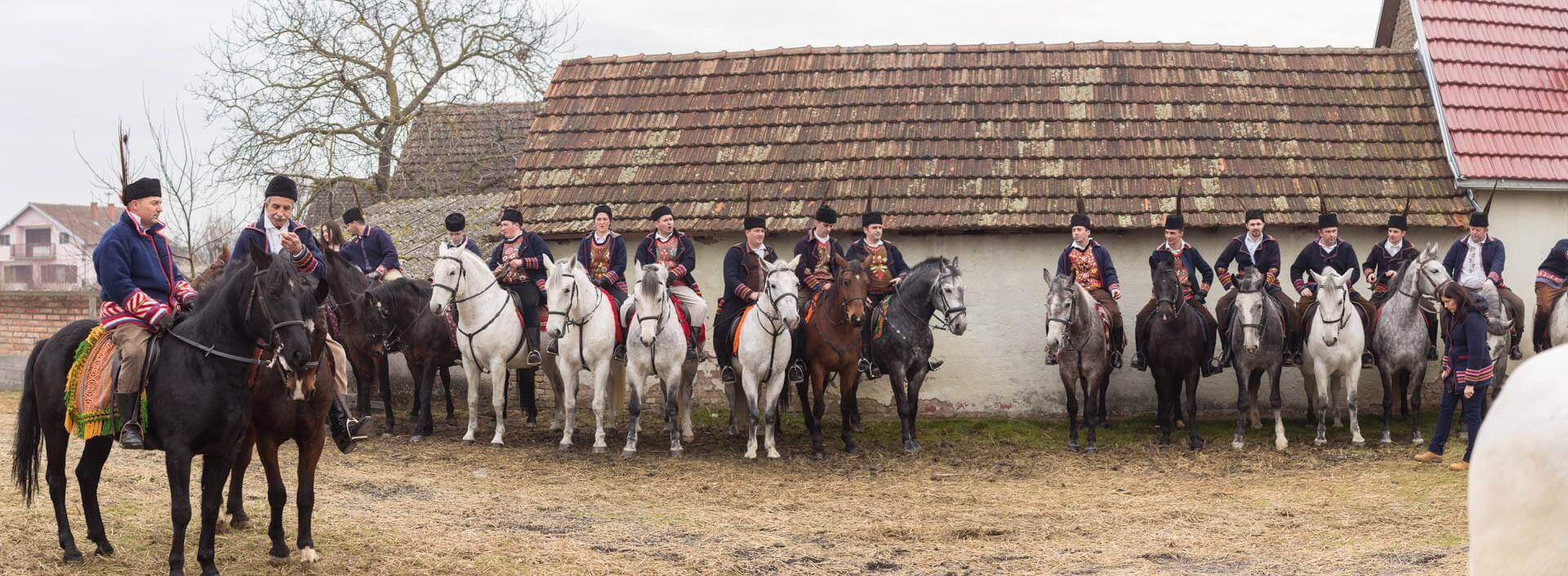
Horsemen getting ready to start their tour through the village - Photo Credit: Marko Miličević - načelnik Opčine Ivankovo, Facebook page
This event, as mentioned before, is an intro to Lent and lastly Easter. Apart from organized games and parties, Carnival is also a great place to introduce the traditional food and drinks Slavonia has to offer. However, that needs its own article. Until next time.
For more, check out our lifestyle section.


